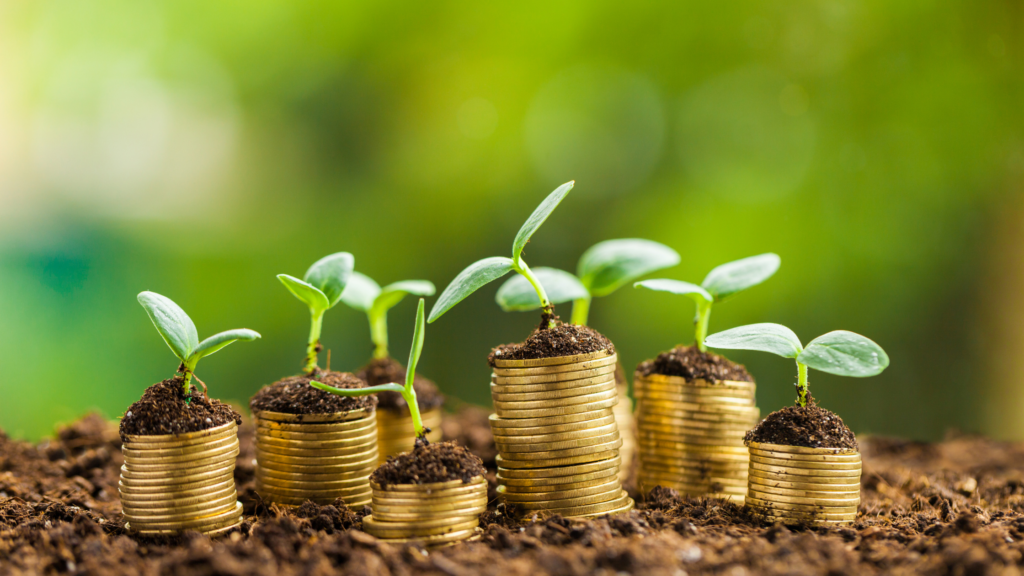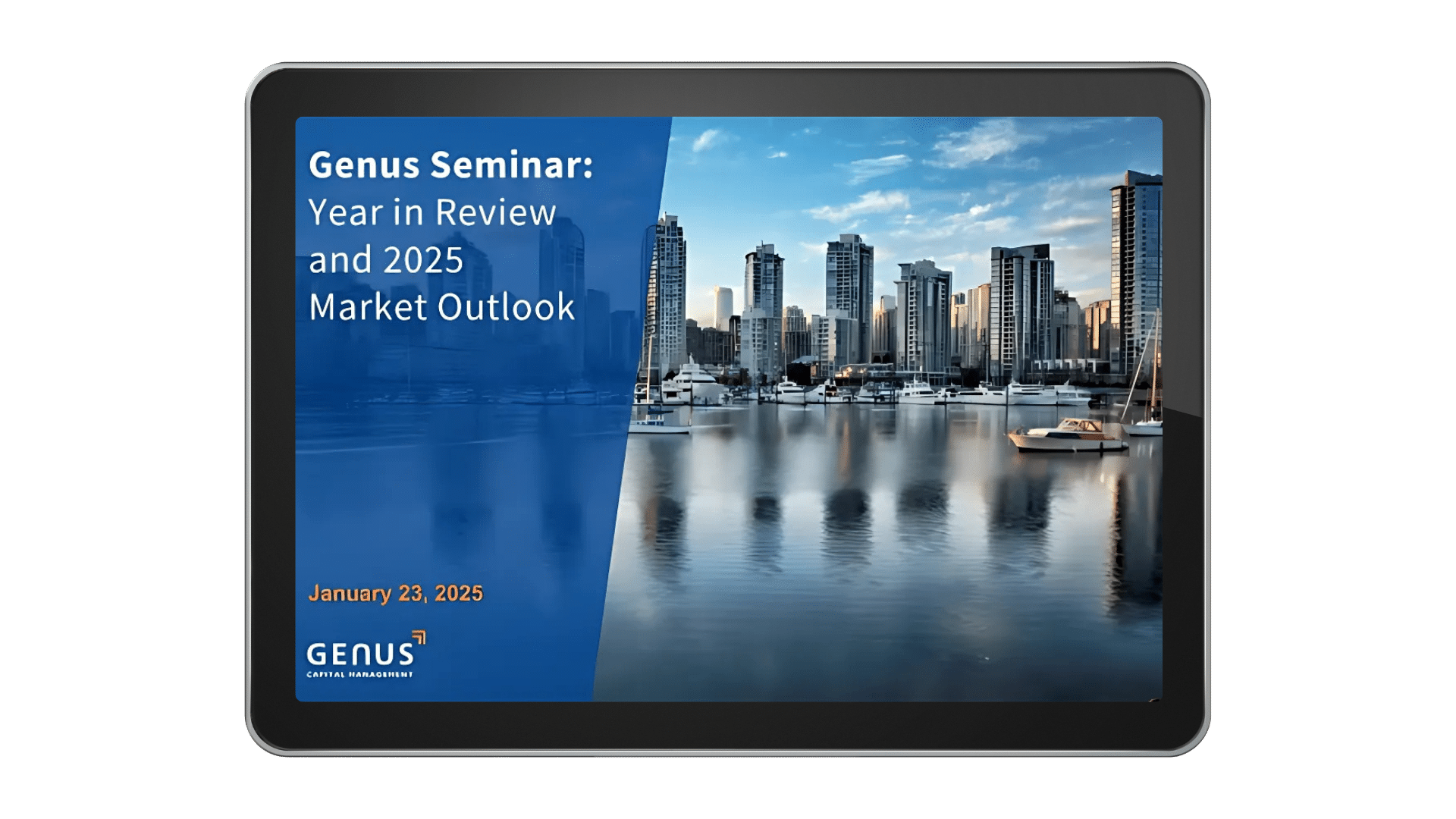When wealth managers talk about a balanced investment portfolio, the idea of the “60:40 rule” has long reigned: that is, a combination of 60% equities and 40% bonds. The premise is that when stocks drop due to economic slowdowns, fixed income assets like bonds will typically appreciate. Bonds, in this way, provide a safety valve for portfolios.
But as Ian Lusher—a partner and portfolio manager at Genus—explained in a recent webinar, bonds have become the “forgotten part” of many portfolios. “There are a few reasons for this,” says Lusher. “Bonds are not very exciting, so the media never talks about them. But they’re also pretty complicated to understand—and, for the longest time, there wasn’t a lot of upside because we were in a low-interest-rate environment.”
After several years of rising interest rates, however—which is never good for bonds, which decrease in price as interest rates rise—the tides have finally turned, with both the Bank of Canada and U.S. Federal Reserve reducing their prime lending rates. “Bond yields have started moving down,” says Lusher, “and when yields move down, the price of bonds goes up. So there’s some upside for clients.”

A resurgence for bonds
To help explain the role of bonds in an investing strategy—including an impact investing strategy —Lusher was joined on the webinar by Sébastien Rheaume, Managing Director at AlphaFixe Capital, which advises Genus on our fixed income portfolio.
As Rheaume explains, for most investors the ups and downs of bond yields amount to noise. “If you were to buy a five-year bond today, the yield you’d get is about 2.8%,” he says. “If you hold that for the next five years, your return will be 2.8% throughout this five-year period.” But if you had to sell that bond in 2022—when interest rates began their rapid rise from near 0% to over 5% by mid-2023—you would have taken a hit. “If you’re just a few years away from retirement and you’re down 10% on your portfolio, that is a huge shocker.”
Rheaume says that the total return on bonds is all about math—and the math is currently in investors’ favour. “When we had really low interest rates in 2021 and 2022, there wasn’t much of a buffer,” he notes. “But if you look at today’s market, you’re starting closer to 4.5%. So you have a much bigger buffer. The probability of having a negative return when you’re starting with rates at 4.5% is substantially less than when you’re starting at 1.5%.”

The role of bonds in impact investing
With bonds returning to their traditional place in portfolios as a safety valve—now with some potential for high returns—there is also great potential for investors who want to use fixed income products to realize an impact in the world.
Impact bonds, like impact equity investments, are those fixed-income products that fund projects with dedicated environmental and/or social benefits. According to recent data from Bloomberg, sustainable bond issuance topped a trillion dollars last year, led by record levels of green bond sales.
Many of these bonds are issued by governments (municipal, provincial and federal), as well as corporations and other organizations that have a green or sustainability initiative they want to fund. The Genus Global Impact Bond Fund offers a pool of such bonds that enable our impact investors to support projects that fund everything from renewable energy initiatives to low-carbon infrastructure to low-carbon transportation.
To avoid greenwashing or impact washing, there is a defined taxonomy in place, led by the Climate Bonds Initiative, to help determine what qualifies as a green bond. “There are eight different categories as to what is eligible,” says Sébastien Rheaume. “The last thing you want to do is support a project that you think has an impact but that, in the end, doesn’t have any impact.”
In the webinar, Rheaume points to the example of the City of Vancouver, which, a couple years ago, issued a green bond to help fund an initiative to build separated sewer systems and eliminate overflows by 2050. The bond allocated $50.2 million to the initiative, and it has already demonstrated clear impact: 4.6 kilometres of mainline sewers had been replaced as of 2022, with 57.4% of Vancouver sewers now separated.
As to whether an impact investor should favour equities or bonds, Ian Lusher says it really comes down to a client’s risk tolerance.
“Going back to the 60:40 rule, if they have that classic balanced portfolio, we need to have impact assets on the equity side and on the fixed income side,” he says. “Some people find it more interesting to own impact companies versus a bond—and vice versa. But one is not better than the other.”
Interested in making an impact with your investment portfolio? Get started today with our digital and personal wealth management services.
References:
- Systematic-Investing. (n.d.). Rebuilding 60/40 portfolios with alternatives | BlackRock. BlackRock. https://www.blackrock.com/us/individual/insights/60-40-portfolios-and-alternatives
- Lioudis, N. (2024, June 30). Inverse relation between interest rates and bond prices. Investopedia. https://www.investopedia.com/ask/answers/why-interest-rates-have-inverse-relationship-bond-prices/
- Bank of Canada. (2024, September 4). Bank of Canada reduces policy rate by 25 basis points to 4¼%. https://www.bankofcanada.ca/2024/09/fad-press-release-2024-09-04/#:~:text=The%20Bank%20of%20Canada%20today,policy%20of%20balance%20sheet%20normalization.
- Morgan, J. (2024, September 19). September 2024 Fed Meeting: Fed cuts rates by half point to support economy | J.P. Morgan. https://www.jpmorgan.com/insights/outlook/economic-outlook/fed-meeting-september-2024#:~:text=At%20the%20September%202024%20Federal,of%204.75%25%20to%205%25.
- BYAbigail RuegerDeputy Editor, Banking. (2024, September 18). The Fed dropped interest rates in September and may make more cuts before the end of the year. Fortune Recommends. https://fortune.com/recommends/banking/federal-reserve-rate-forecast/
- Bloomberg – Are you a robot? (n.d.). https://www.bloomberg.com/professional/insights/trading/green-bonds-reached-new-heights-in-2023/
- Climate Bonds Taxonomy. (2023, May 3). Climate Bonds Initiative. https://www.climatebonds.net/standard/taxonomy











